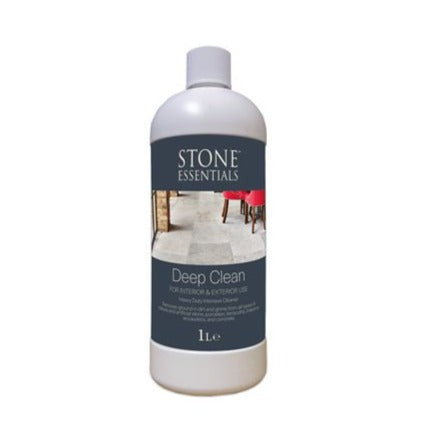Application
Application form

We're probably all agreed that tile cleaning isn't exactly a high-octane activity. It's doubtful everyone comes home from work, brimming with glee at the prospect of scrubbing their ceramics. But keeping your bathroom tiles and kitchen tiles clean is essential for a healthy and attractive living space. Over time, dirt, grime, and stains can build up on your tiles, making them look dull, tired, and unattractive. And no one wants that.
But don't worry! We're here to help you rescue your ceramic stunners or porcelain pretties and restore them to their former glory. And if done properly, possibly while rockin' out to one of your favourite playlists, your ceramics will be shining. And you might enjoy it. Maybe. Hopefully.
So, fill your brain with our top tile cleaning tips and techniques, and then get your gloves out, your soundtrack on, and dive in!
One of the things about kitchens is there tends to be a lot of grease. As hard as you try to keep your kitchen an oil-free oasis, that stuff just sticks to your surfaces, creating a film that dulls your finish and your style. Particularly if you have tiled splashbacks. One of the best de-greasers is actually something you probably use most days; washing up liquid. Its degreasing properties work wonders on your plates and are actually quite good at removing oily stains and films from other things too. Like kitchen tiles.
NB: This is a general guide for ceramic and porcelain tiles. For more specifics and advice for natural stone products, consult your tile manufacturer's guidelines.
This is a great all-rounder but not suitable for natural stone, so if your tiles are a natural stone product, please avoid this step. Instead, use a cleaner recommended by your tile manufacturer.
If that fails, it's time to bring out the heavies. And by heavies, we mean Ca' Pietra Deep Clean. Suitable for all types of tiles, both indoor and outdoor, this tile cleaner is perfect for routine cleans and more serious stains alike.
Ok, so you've tidied up your tiles, but what about your grout lines? Often overlooked, grout joints form an integral part of keeping your kitchen tiles and bathroom tiles in good shape. And while coloured grout hides a multitude of sins, if you're a stickler for the white stuff, you're going to need to brush up on your cleaning game. With bicarbonate of soda and a brush.
Simply follow the guidelines for the bicarbonate of soda cleaning paste above and clean your grout lines with an old toothbrush or electric toothbrush. Your grout will be gleaming in no time.
Bathroom tiles need regular cleaning to keep them looking gorgeous. All that soap scum and limescale can take a toll on your tiles, making them dull and chalky. But as long as you keep on top of it, your bathroom will continue to be a sparkling oasis of loveliness.
And now to answer your burning tile cleaning questions...
While cleaning tiles, there are certain substances you should avoid using, as they can damage the surface or cause discoloration:
Not all tiles are created equal, and different materials may require specific cleaning methods. For example:
How often you clean your kitchen tiles and your bathroom tiles depends on a few things; the level of usage, and the amount of dirt and moisture present. It's usually recommended to clean tiles in high-traffic areas at least once a week. But wiping up spills and regular light cleaning is always a good idea and means you can (hopefully) go longer between deep cleans.
Regular cleaning of kitchen and bathroom tiles is crucial for maintaining a fresh and inviting space. By using the right cleaning solutions, tools, and techniques, you can keep your kitchen tiles and bathroom tiles looking amazing. Just remember to avoid the abrasive surfaces and acidic substances for your delicate natural stone tiles and you're good. Then, with proper care and maintenance, your tiles will stay beautiful and in place for years to come.
{"one"=>"Select 2 or 3 items to compare", "other"=>"{{ count }} of 3 items selected"}



